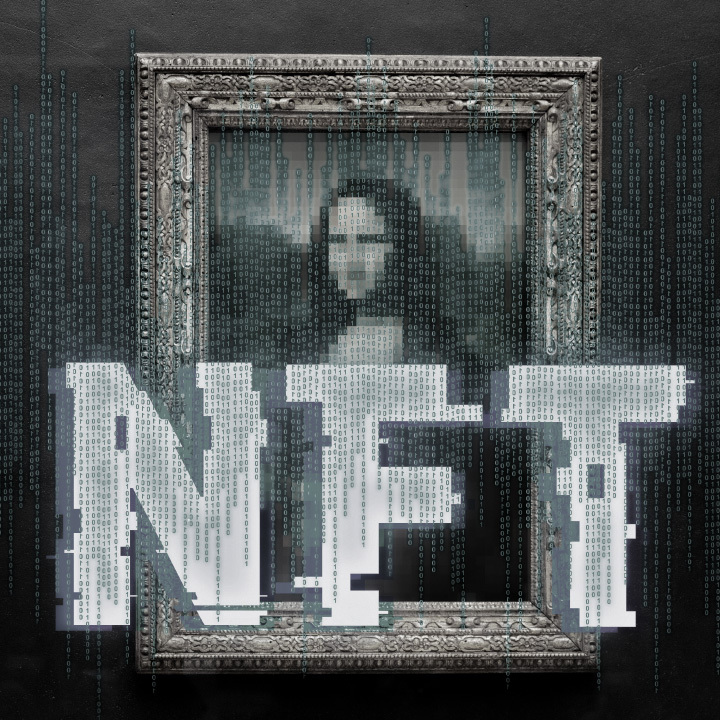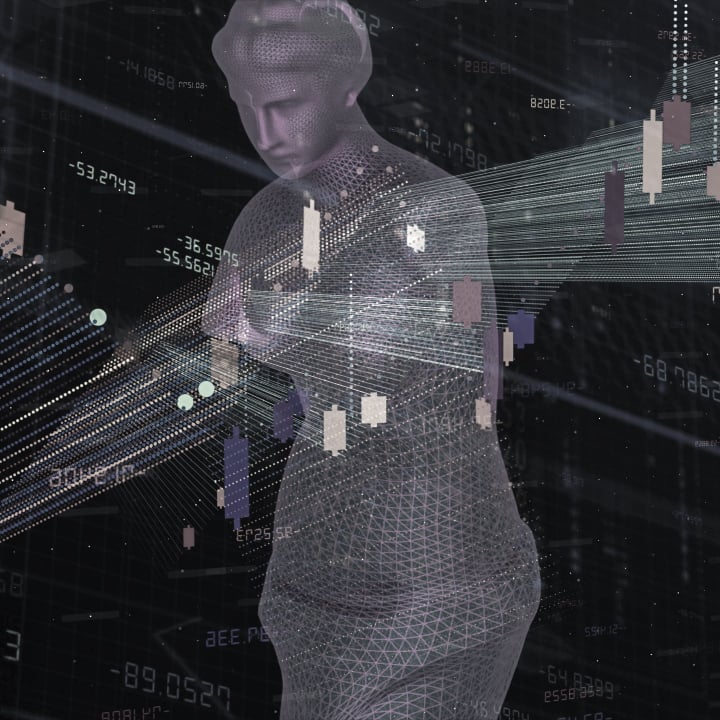Although non-fungible tokens, better known as NFTs, have technically existed since 2014, it was not until 2021 that they became well-known assets. Since then, the NFT market has exploded, and the possibilities for their use are nearly endless.
From real estate to artwork and sports collectibles, NFTs present a lot of opportunities for forward-thinking companies. However, before an organization can begin minting and selling NFTs, it's important to fully understand their function and purpose.
What is an NFT?
While NFTs have certainly been getting more attention in the media, they are still a bit of a mystery to many consumers and organizations. People who are already familiar with cryptocurrencies are most likely aware of NFTs and how they work, but for the rest of the population, it's helpful to clarify the key concepts of this emerging technology.
Blockchain
Blockchain technology is the foundation of not only NFTs but also cryptocurrencies. A blockchain is a public, immutable ledger or database that allows people to track and trade assets within a peer-to-peer network.
When a transaction is completed, the information is entered into the blockchain and the system confirms that it's legitimate. The information from this and other transactions is then grouped into blocks that link together, hence the name blockchain. This chain is permanent, so it is easy to track the transfer of an asset from one person to another.
In practical terms, a blockchain is significant because it keeps public records of transactions that can be recorded, viewed, and distributed, which creates an excellent level of transparency. It cannot, however, be altered, deleted, or destroyed, making it immutable.
Blockchain technology is also useful because it's secure. While it isn't immune to potential hacking, all of the data is immutable. The fact that all of the records are chained together deters most hackers, who are generally looking for less complex targets.
Fungible vs. Non-fungible
Although they both involve the same blockchain technology, there's an important distinction between fungible and non-fungible items. In fact, it's exactly what separates NFTs from many other kinds of online currency.
Examples of fungible tokens include:
- Bitcoin
- Ether
- ALGO
These are all cryptocurrencies that can be exchanged because they have equal value. This is parallel to the concept of physical currency, in which a $20 bill can be traded for another without any loss or change in value.
Things that are non-fungible, on the other hand, are not exchangeable because they do not have equivalent values. Just as you cannot trade one Van Gogh painting for another because one might be worth considerably more, you cannot simply exchange NFTs.

Non-fungible tokens
With this information in mind, the concept of an NFT is much clearer, particularly when examining both parts of the phrase. First, NFTs are "tokens." This simply means that they are items, specifically ones that can be purchased or sold.
Secondly, these particular tokens are non-fungible. In other words, they are digital assets that cannot be replicated or exchanged.
NFTs generally represent real-life objects, including artwork, music, videos, and even real estate. They are exclusively sold and purchased online, typically with cryptocurrency, bank wires or credit cards.
One of the defining features of an NFT is that it is coded in such a way that it is either unique or of a very limited run. As a result, they are not like most other digital artwork, which has the potential for essentially limitless replication and duplication.
While it is possible to copy an NFT in the same way that you can buy a print of a painting, having a copy does not hold equivalent value to owning the original work. Thus, NFTs demand a high price because they are rare.
What kinds of NFTs are there?
One of the most compelling aspects of NFTs is that they allow for so much creativity. The most popular types of NFTs include:
- Profile pictures (PFPs)
- GIFs
- Videos
- Sports highlights
- Collectibles
- Virtual avatars
- Video game skins and items
- Ticketing
- Utility
- Tweets
- Generative art
NFTs serve a variety of purposes, and buyers get exclusive ownership rights once they purchase them. They can also be personalized. For example, an artist can sign a work of digital art by including their signature in the file.
The truth is that it is not yet possible to fully grasp all of the potential uses of NFTs. The ease, transparency, and security involved in the sale and purchase of these items make it extremely likely that they will take a prominent place in more industries in the future. Creators and sellers are also sure to continue to explore new applications of NFTs in areas like art and consumer brands, in which NFTs have already taken hold.

Who buys NFTs?
The most avid NFT buyers at the moment are obviously technology-savvy. After all, NFTs were created because people wanted to be able to trade not only Bitcoin but also other assets with blockchain technology.
As is the case with any purchase, buyers have different motivations. Some people see NFTs strictly as an investment, like any other collectible or work of art might be. They hope that the NFT will either retain or gain value so that it can be resold in the future for a profit.
For others, NFTs are a matter of socializing or taking part in a trend. For example, celebrities have recently purchased numerous NFTs from the Bored Ape Yacht Club. These NFTs feature apes with different clothes, accessories, and facial expressions, each one unique from the next. While Bored Ape NFTs originally cost as little as $200, today they sell for hundreds of thousands of dollars. Justin Bieber reportedly spent $1.29 million on a Bored Ape, which far surpassed its market value.
In addition to celebrities and investors, NFTs are currently most effectively capturing the interest of millennials. This is, in part, because older generations simply aren't yet aware of the technology. However, with increasing publicity and popularity, NFT purchases are likely to become more widespread across all ages.
What is the purpose of NFTs?
Interestingly, many NFTs include or are composed of media that could technically be obtained elsewhere. For example, sports leagues sell clips of famous games in NFT form. These same clips can be found online in other formats. This begs the question, what is the point of an NFT?
In short, NFTs are original and encoded in such a way that they have built-in authentication. While anyone can watch a clip of an NBA game on YouTube, only the person who has purchased the NFT can claim rightful ownership of that clip. With the special coding in NFTs, buyers can easily prove that they are legitimate owners, which makes it an easy way to demonstrate buying power and wealth.
There are also significant benefits to sellers of NFTs. For instance, artists can sell directly to customers rather than relying on galleries or auction houses to make sales. The most significant benefits of selling NFTs are that:
- There is no need for intermediaries
- Artists can program NFTs to receive royalties when work is resold
- Creators of NFTs have the possibility to retain more of the profits of a sale
- Imitation and forgery are less likely
- The market is more efficient
- Transactions are straightforward and simplified
- Ownership is on the blockchain, which cannot be changed
In addition to artists and content creators trying to sell their work, NFTs have also played a role in other business interactions. These include real estate deals and charity auctions.
Celebrities and organizations have released unique artwork and memories for sale as NFTs and have made considerable profits doing so. One particularly well-known instance is when a single LeBron James highlight honoring Kobe Bryant sold for almost $400,000.
NFTs also create opportunities for artists and creators who might not otherwise be able to find an audience for their work. Every artistic endeavor is personal and subjective, which means that finding the right buyer can be challenging. With NFTs, sellers can easily share their work to a global online audience.
Finally, many kinds of art are difficult to transport and expensive to ship. With NFTs, artists can find buyers online and complete a transaction quickly and easily without having to worry about the logistics of transferring the digital product from one place to another.

What's next for NFTs?
Because the concept of NFTs is fairly new, the future is wide open for growth and success in the market. Consider the fact that buyers spent more than $40 billion on NFTs in 2021. The success that NFT sellers have achieved thus far is an excellent indicator of the possibilities that lie ahead.
To learn more about the role that NFTs can play in your organization or schedule a call with our team to discuss Anterdit’s white-label marketplaces, contact the team at Anterdit.



